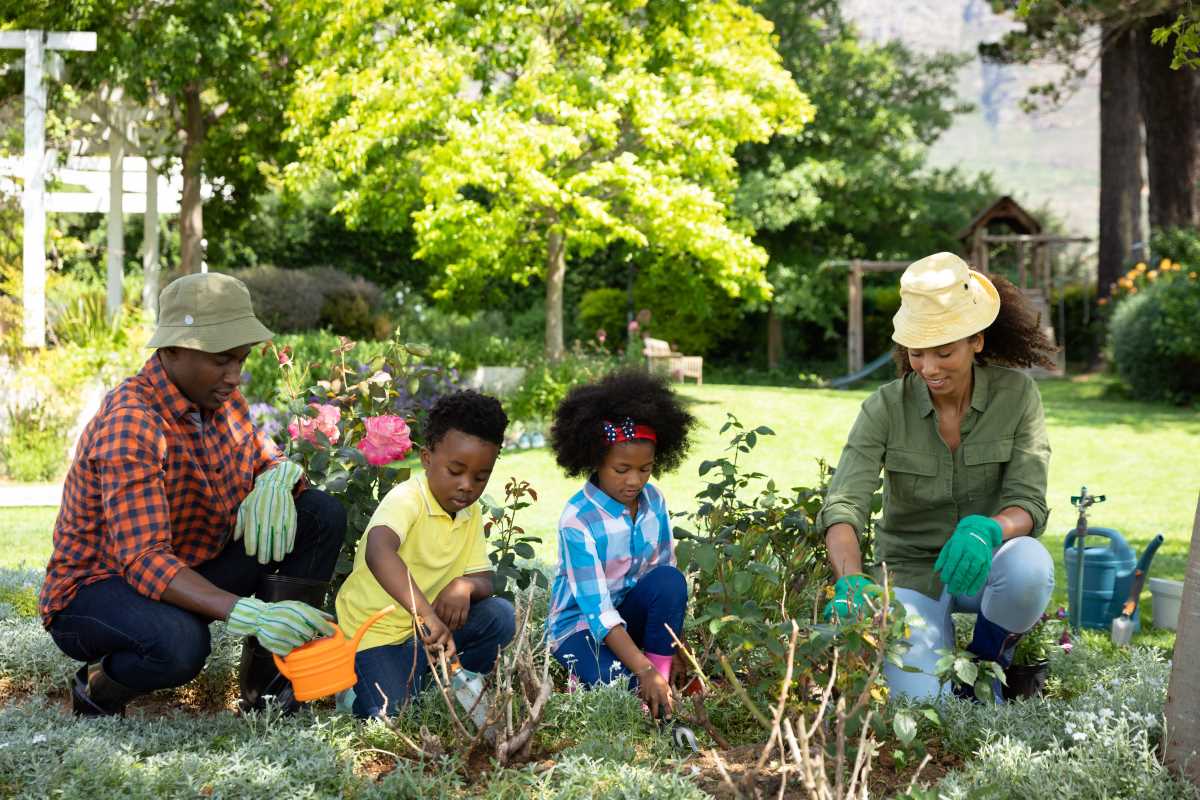The word "chore" often gets a bad rap. It conjures images of begrudgingly scrubbing floors or taking out the trash under protest. But what if a chore could be something more? What if it could be an adventure, a science lesson, and a bonding experience all rolled into one muddy, glorious package? Welcome to the world of family gardening, where chores transform from tedious tasks into shared memories. Getting your hands dirty together in the garden isn't just about growing plants; it's about growing connections, patience, and a genuine appreciation for the natural world. It’s a chance to unplug from screens and plug into something real.
Let's be honest, convincing a child that weeding is more fun than their favorite video game is a tough sell. The key is to rebrand the work. It’s not just pulling weeds; it’s a mission to protect your precious vegetable heroes from villainous invaders. It’s not just watering; it's giving your plant friends a refreshing drink on a hot day. By framing these seasonal tasks as playful, important activities, you can foster a sense of ownership and excitement in even the most reluctant little gardener. The garden becomes a living classroom and a dynamic playground, offering lessons in biology, responsibility, and the simple joy of watching something grow because of your care.
Springing into Action with Planting
There is a unique magic to spring. After a long winter, the earth feels full of potential, and there’s no better way to tap into that energy than by planting together. This is the ultimate starting-line activity, brimming with hope and the promise of future feasts. For the youngest family members, this task is a sensory wonderland. Let them feel the cool, crumbly soil in their hands and marvel at the tiny seeds that hold the blueprint for a giant sunflower or a juicy tomato. Their small fingers are surprisingly perfect for poking holes in the dirt and gently tucking seeds into their new homes. It’s a tangible connection to the life cycle that no textbook can replicate.
For older kids and teens, the planting process can involve more strategy and science. Let them take the lead on planning the garden layout. Which plants need full sun? Which ones prefer a bit of shade? This is a practical application of research and critical thinking skills. They can be in charge of measuring the proper spacing between rows, a real-world math problem with delicious consequences. This shared project allows everyone to contribute at their own skill level, turning the garden bed into a canvas for family collaboration. From the toddler dropping a bean seed into a hole to the teenager designing a companion planting scheme, everyone has a vital role to play in this first, crucial step of the gardening year.
The Summer Harvest Celebration
If planting is the promise, harvesting is the glorious, sun-drenched payoff. Summer in the garden is a season of pure abundance, and gathering the fruits (and vegetables) of your labor is less a chore and more a treasure hunt. Sending kids out with a basket to find all the red, ripe tomatoes or to hunt for hidden zucchinis that have seemingly doubled in size overnight is an adventure. The excitement of discovering a perfect strawberry or pulling a stubborn carrot from the earth is a simple, profound joy. This is where the connection between their hard work and the food on their plate becomes crystal clear.
The harvest is also a fantastic opportunity for unstructured, spontaneous fun. Who can find the silliest-shaped potato? Can we find a cucumber that looks like a snake? These little games transform the task into a playful competition. And the rewards are immediate and delicious. Snacking on sun-warmed cherry tomatoes straight from the vine is a core memory in the making. This act of gathering teaches children about ripeness, gentleness, and the rhythms of nature. They learn that good things take time and that patience is rewarded with the sweetest flavors. It’s a sensory feast that reinforces the value of their efforts throughout the season.
Autumn's Great Garden Tidy-Up
As the air turns crisp and the leaves begin to fall, the garden prepares for its long winter sleep. The "fall cleanup" might sound like the most chore-like of all gardening tasks, but it’s actually a vital and surprisingly satisfying job that’s perfect for the whole family. It's the final chapter of the year's garden story, a time for reflection and preparation. The main event is often leaf-raking, which is, of course, a thinly veiled excuse to create a giant pile to jump in. This is a non-negotiable part of the process and a rite of passage for any young gardener.
Beyond the leaf-pile shenanigans, the autumn cleanup involves important tasks that set the stage for next year’s success. Pulling up spent annual plants and adding them to the compost pile is a powerful lesson in nutrient cycling. It teaches kids that nothing in nature is truly wasted; the remains of this year's tomato plants will become the rich soil that feeds next year's crop. This is also the time for one of the most hopeful gardening acts: planting bulbs. Entrusting a child with a handful of daffodil or tulip bulbs feels like burying treasure. It’s an act of faith in the future, a promise to yourselves that spring will, indeed, come again.
Making the Chores Stick
Getting kids to not only participate but actually enjoy garden work requires a bit of clever parenting. The goal is to make it feel less like work and more like play. A huge part of this is equipping them with their own tools. A small, child-sized set of gloves, a trowel, and a watering can gives them a sense of ownership and professionalism. It says, "You are a real gardener, and your job is important." When they have tools that fit their hands, they are more capable and less likely to become frustrated.
Another key is to manage expectations and attention spans. Don't plan a four-hour garden marathon. Instead, aim for short, focused bursts of activity.
- Set a timer for 20-30 minutes of "garden mission" time, followed by a break for a snack or free play.
- Assign specific, achievable roles. One person is the "Water Wizard," another is the "Weed Warrior," and another is the "Harvest Hero."
- Turn tasks into challenges. "How many dandelions can you pull in five minutes?" or "Let's see who can find the five biggest zucchini!"
- Let them have a space of their very own, even if it's just a single pot, to plant whatever they want. This autonomy is incredibly empowering.
- Above all, celebrate the effort, not just the result. Praise their hard work, their willingness to get dirty, and their great attitude, regardless of whether every seed sprouts or every weed is pulled.
Beyond the Garden Bed
The magic of family gardening doesn't end when you wash the dirt off your hands. These seasonal chores provide endless opportunities to extend the experience and learning. The summer harvest, for example, flows directly into the kitchen. Making a salad with lettuce you picked minutes ago, baking a zucchini bread from a monstrous squash, or simmering a tomato sauce with your own herbs connects the dots between the garden and the dinner table. Involving children in this "garden to table" process solidifies their understanding of where food comes from and often encourages them to try new things.
Similarly, the autumn cleanup can lead to creative projects. Pressing and preserving the most beautiful fall leaves, creating a "bug hotel" with sticks and hollow stems to provide a winter home for beneficial insects, or studying the worms in the compost pile are all wonderful, educational extensions of the garden chore. These activities reinforce the idea that the garden is a complete ecosystem, full of life and lessons even as it winds down for the year. By weaving these tasks into the fabric of your family life, you're not just maintaining a garden; you're cultivating curiosity, building resilience, and growing a family that knows how to work, play, and thrive together.







